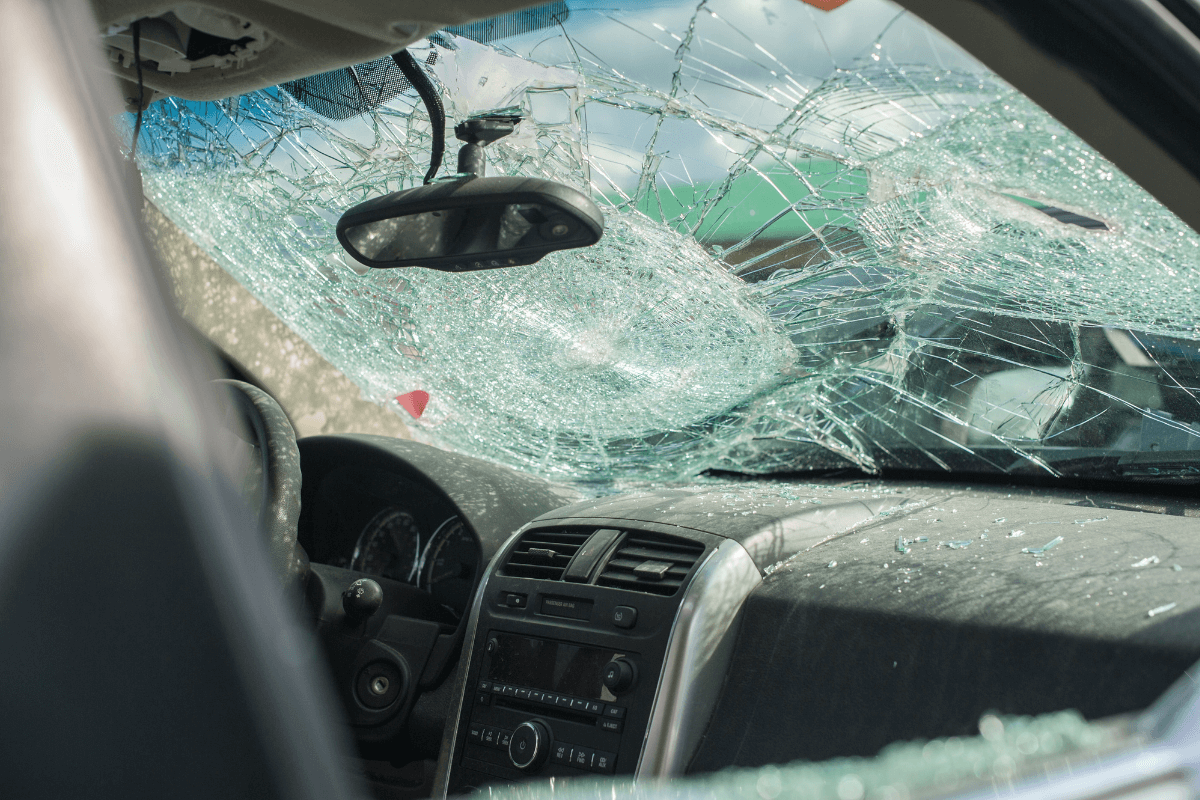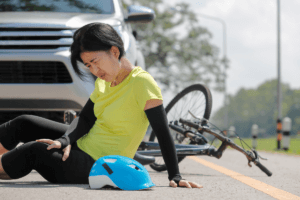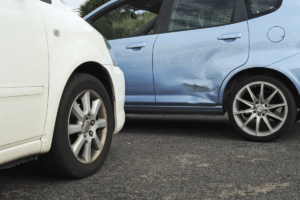Top 6 Most Common Types of Car Accidents

Unfortunately, just about every driver is familiar with car accidents, whether because they have been involved in one or found themselves stuck in a traffic jam caused by one. Motor vehicle accidents consistently hold a high position on lists documenting causes of injury and death throughout the United States and in the State of California. Reasons for auto accidents range from driver behaviors to vehicle malfunctions to environmental conditions. Every motor vehicle crash has its own unique circumstances, but most fall into one of the top 6 most common types of car accidents. No matter what kind of crash you or someone you love has experienced, the knowledgeable California car accident lawyers from Curtis Legal Group can help you sort through the chaotic aftermath and fight to get you compensated for your losses.
Car Accident Statistics Statewide and Nationwide
For the most recent full year of data collection available, the California Statewide Integrated Traffic Records System (SWITRS) reported 146,148 injury- or fatality-producing car accidents statewide.
In analyzing general types of motor vehicle accidents that led to fatalities during a recent year, the National Safety Council (NSC) discovered more deaths occurred between two or more vehicles than when a single automobile was involved. Accidents involving more than one vehicle:
- Accounted for 43% of all car accidents
- Produced 63% of accident-related injuries
- Accounted for 71% of injury crashes
- Accounted for 71% of all crash events
Single-vehicle crashes between vehicles and fixed objects represented the next most common type of accident, and vehicle collisions with pedestrians and non-collision accidents represented the least common.
These less common scenarios accounted for a higher proportion of fatalities, 54%, but a lower percentage of injuries, 35%.
Car Accidents Involving More Than One Vehicle
The most common general type of auto accident involves more than one vehicle. However, within this category, there are a variety of accident subtypes.
1. Rear-End Collisions
California drivers are legally required to avoid following other vehicles closely enough in a way that causes them not to have enough time to slow or stop under Vehicle Code 21703. Still, rear-end collisions are quite common. Drivers may be distracted and fail to see the brake lights in front of them until it is too late. Other times, they just may be impatient, tailgating the person in front and leaving no room to stop before crashing.
Typically, the tailgating driver – the one who hits the vehicle in front of them – is responsible for compensating the person they hit. However, in some cases, the front driver may bear at least some fault. For example, slamming on the brakes without warning–sometimes to incite a rear-end accident they hope to “collect” from – can put the front driver at fault.
Statistics from the Insurance Information Institute (III) show that rear-end collisions account for 7.5% of car accident fatalities.
 2. Sideswipes
2. Sideswipes
Sideswipes happen when cars are driving next to each other, or at least close to each other, in separate lanes heading in the same direction. If one car attempts to merge but misjudges the distance between the cars or loses the nearby car in a blind spot, a sideswipe event can occur.
These car accidents can also happen if a driver performs a steering overcorrection and loses control, sending their car into the one next to it. Insurance Information Institute statistics show that sideswipe accidents represent 3% of car accident fatalities.
3. Multi-Car Pileups
Multi-car pileups are also called “chain reaction” accidents. One car crashes, then another car crashes into that one, and so on. Only accidents involving more than two cars fall into the multi-car pileup category.
These accidents are most commonly seen on roads built for high-speed traffic. Sometimes, what starts as a single-car event, such as a truck rollover or jackknife, turns into a chain reaction as the disabled single vehicle obstructs the path of traffic. More vehicles become involved when they cannot avoid the obstacle.
Any car accident can cause serious injury or death, but multi-car pileups are especially dangerous. Car occupants are hit from all angles and can experience a series of impacts, each one compounding the damage to vehicles and bodies.
4. Head-On Collisions
According to statistics, head-on collisions account for 10.9% of crash fatalities. These events occur when the front ends of two separate cars collide. These accidents typically involve violent impacts and are often caused by driver negligence. A driver may send a text or otherwise take their eyes off the road and veer into the lane of oncoming traffic, leaving the oncoming driver no time to avoid the crash.
Impaired, inexperienced, or distracted drivers may miss a “one-way” or “do not enter” traffic sign or enter a highway through an exit ramp. As they proceed into oncoming traffic, they are likely to cause a head-on crash.
Single-Vehicle Collisions
Car accidents can involve only single vehicles but still involve collisions either with fixed objects, pedestrians, or cyclists. Low-speed crashes with fixed objects, such as hitting a parked car or tree when pulling out of a parking space or driveway, are not particularly harmful to the driver or passengers.
The car will most likely sustain the brunt of the damage. While drivers may sustain back or neck injuries, fatalities from these kinds of low-speed events are not common. However, moderate- and especially high-speed crashes with fixed objects are quite dangerous. They can happen when:
- A driver loses control and careens off-road into a wall, guardrail, or other structure.
- A semi-truck has an improperly secured load and releases cargo or debris into the roadway.
- One driver’s recklessness forces another driver off the road, and that driver crashes into a tree, shrubbery, light post, or other object.
Statistics also show that single-car collisions with fixed objects account for 28.9% of motor vehicle fatalities. Having a seasoned California car accident attorney investigate the wreck is critical. Single-car accidents are not necessarily the fault of the vehicle’s driver. Often, other parties need to be held accountable.
5. Single-Vehicle Collisions With Moving Objects

While cyclists are more vulnerable than car occupants and more likely to sustain damage, they must obey the rules of the road. When they fail to do so, they could bear some fault in an accident involving a larger vehicle.
Hitting an animal, especially deer or other large animals, can cause substantial damage to a car and its occupants. Even auto accidents involving smaller animals can also lead to chain-reaction damage. For example, suppose a driver hits a dog or a cat that darts into the road. If the driver loses control of the vehicle, they could flip over or crash into something else. The data shows that single-car crashes with moving objects account for 22.8% of crash fatalities.
6. Single-Vehicle Non-Collision Accidents
Single-vehicle non-collision accidents can seriously injure or kill the vehicle’s driver and occupants. Even though the car does not crash into something else, it rolls over – sometimes multiple times. Single-car non-collision accidents represent 8.2% of crash fatalities, according to national data.
Causes of these events include:
- Speeding: When drivers lose control of the vehicle at high speeds and attempt to stop or regain control, they could send it off balance and cause a crash.
- Driving under the influence (DUI): Impaired drivers make poor decisions or are simply incapable of keeping the car on balance and under control. A too-late, panicked attempt at vehicle correction can send the car rolling.
- Drowsiness: Driver fatigue lowers reaction times, road awareness, and decision-making, putting these drivers at similar risk as those driving under the influence.
- Bad weather: Rain and sleet make for slick, dangerous road conditions that can send cars out of control. Even heavy winds can make it difficult to keep a car balanced and prevent an accident.
- Sharp turns: An unexpected turn or a sharp turn taken too fast can lead to a rollover crash.
What All Car Accidents Have in Common
All car accidents have the potential to produce damage, leaving victims with car accident injuries and medical costs, unable to work and earn income, and emotionally scarred. Under California law, it is a victim’s right to hold the at-fault party or parties accountable for their losses and fight for compensation, and the California car accident lawyers at Curtis Legal Group can help.
With over 100 years of combined experience and a history of victories, our team of hard-hitting attorneys is here to help you get the financial justice you deserve after sustaining a car accident caused by someone else’s negligence.
Get Your Free Case Review
Curtis Legal Group is dedicated to serving the needs of injured victims, which is why we offer potential clients a free case review. Once we take your case, you can trust our experienced, attentive California car accident lawyers to work hard on your behalf.
We investigate your crash and collect evidence to establish the at-fault party’s negligence. Our attorneys then demand a settlement to cover every loss and meet your continuing needs. If a proper settlement is not offered, we stand ready to head to trial. We look forward to helping you move toward recovery and a brighter future. Call or send a message today to schedule a free consultation.

 2. Sideswipes
2. Sideswipes